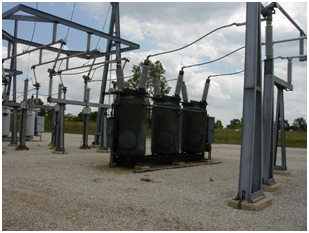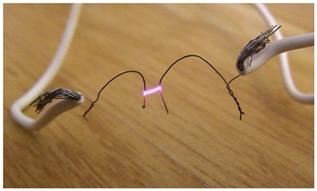Importance of Arc in Circuit Breaker
On the opening of the two current contacts a gap appears between them. An arc acts as a bridge between the contacts thus providing a low resistant to the flowing current.
As a result no sudden interruption will occur in the current flow. Because of the presence of the arc the current flow does not experience any rapid change in the current when the contacts open. Due to this fact the system does not experience any irregular shift in the voltage.
The alteration in the voltage when the contacts open is given by the equation V = L.di/dt. Here “i” represents the current which is flowing through the contacts moments before their opening, “L” represents the system inductance and di/dt stands for the rate of change of current in accordance with time when the contacts are opening.
The arc is quenched for a few moments at current zero every time when considering the alternating current. Once the current zero has crossed, the next cycle of current starts and it is during this time that the media in between the contacts gets ionized again. Therefore the arc present in the circuit breaker is again restored. In order to completely interrupt the current flow the re-ionization of the media between the contacts should be halted.
If the arc is not present in the circuit breaker then it may so happen that a rapid and unexpected interruption will occur in the current. Due to this large amount of switching over voltage will occur which may lead to damaging of the insulation gravely. The role of the arc is thus to aid the conversion of the current carrying state of the contact into the current breaking state.
Arc Quenching
Arc quenching is also known as Arc Interruption or Arc Extinction theory. Let’s talk about a few characteristics of the arc column in question. Gas particles are moving with speed and have a random motion at high temperature. Also in the absence of an electric field net motion is observed in the gas particles. Hence when the gas particles are provided with an electric field the particles gain a drift velocity in addition to their random movement.
The drift velocity depends on the mobility of the particle and the voltage gradient of the field being provided. Particle mobility in turn depends on the mass of the particle and the mean of the paths available for the gas particles for their free and random movement. Whenever a gas particle strikes with something a loss in the velocity of the particle occurs. This is returned when the gas particle is again re-accelerated along the path of the electric field. As a result the net mobility of the gas particles is reduced.
In case of increased pressure, the gas particles come closer to each other which mean that there will be increased amount of collision of the particles with themselves and the walls of the container in which they are present and this leads to the decreased mobility of the particles. Mobility has also been found to be directly proportional to the aggregate current provided by the charged particles. In short it can be said that the temperature, pressure and the nature of the gas all play a role in the mobility of the gas particles which in turn controls the amount of ionization of the gas.
The degree of pressure of ionized medium which is present between the electrical contacts affects the intensity of the arc column and so requires greater attention.
Arc Quenching Occurring in the Circuit Breaker
Conduction, convention and radiation are the ways which are employed for the heat loss to occur from the arc within the circuit breaker. Conduction method acts in the circuit breakers in which the arc is present in oil or is present in shafts or narrow holes. Convention mechanism is used in case of air blast circuit breaker or when in between the contacts a gas flow is present. Radiation mostly occurs at high pressure and is the main way of heat loss at that pressure.
One technique of arc quenching is that the dielectric strength of the medium is swiftly and rapidly increased so that the arc does not get time to re-store itself. In order to achieve this any of the two methods can be adopted: one being the deionization of the gas between the contacts or its replacement with fresh and cold gas.
For the de-ionization of the gas below mentioned two ways can be adopted. Deionization due to:
-
- 1. Increasing pressure
When the pressure is increased the gas particles come closer to each other and the path available for their movement is decreased, increasing the particle density. As an outcome the mobility of the particles is reduced thus greater voltage is required to sustain the arc. Greater the particle density suggests that there will be more recombination of positively and negatively charged particle and thus high rate of de-ionization of gas.
-
- 2. Decreasing temperature
When the temperature of the gas is increased greater collisions occur among the gas particle and ultimately greater ionization rate. But if the temperature is decreased the reverse situation occurs which is decreased rate of ionization. The cooling effect as a result acts to increase the resistance of the arc.


